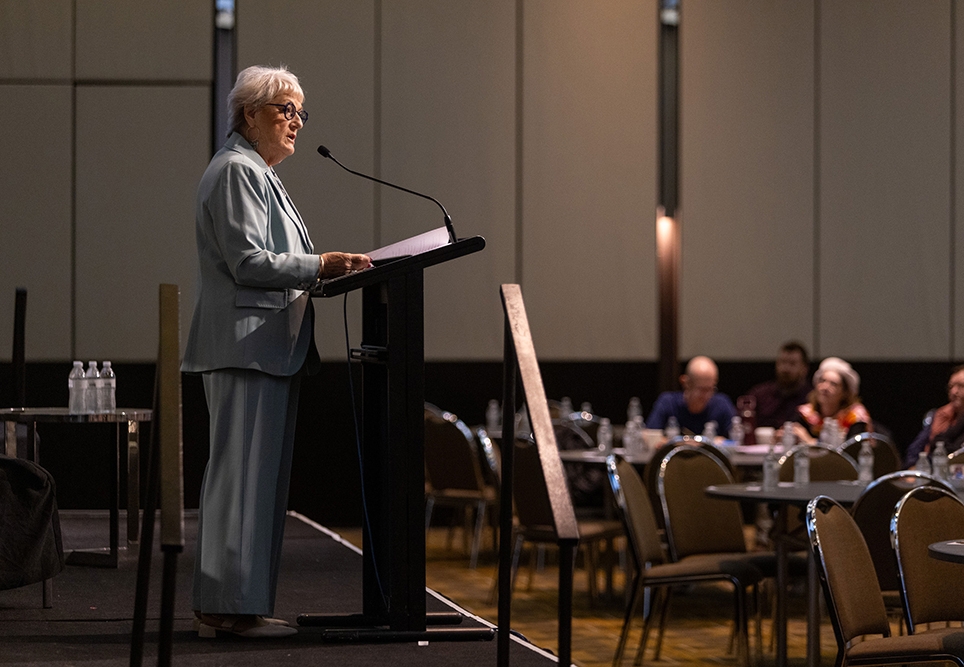
Remote area nurse Mel Howard gave birth to her second son at 34 weeks.
At 20 to 26 weeks, rhesus isoimmunisation had occurred, despite anti-D injections. Huey needed a full blood transfusion when he was born and spent 8 days in NICU.
It was the beginning of a rocky journey for Huey, who experienced a range of health issues during his first years – including periods of apnea, pneumonia which escalated into bronchomalacia, meningitis, issues with balance and immunosuppression.
Mel knew something was wrong and as she struggled to connect the dots, she and her partner Pete moved progressively south to be closer to the health services in Perth.
Taswegian Mel bid farewell to remote area nursing, hard as it was for her to say goodbye to her adopted home far north of WA’s capital.
“The biggest wake-up call for me was when Huey had a bad episode of apnea in the middle of the night.
“I rushed to the clinic in my pyjamas, got tele-health on the screen and said ‘he’s not breathing very well, will you help me?’ They said: ‘Where is the nurse?’ And I said, ‘I am the nurse’.

“If my child has a respiratory arrest here [in a remote area], am I the nurse, or am I the mum?”
It was only later, when Huey was three, that everything started to make sense.
“I found him standing next to a speaker one day, listening to music,” Mel says. “I asked, ‘what are you doing, sweetie?’ And he said, ‘I can’t hear anything from this ear anymore, mum’.
“I booked him in for a hearing test and the week after that he had a hearing aid. Within three months, his hearing loss doubled and I insisted he get an MRI. Six weeks later we received a phone call from his ENT that changed our lives.
“His ears are in pristine condition, but his brain, about 35 per cent of his white matter, has been irreversibly destroyed with widespread lesions, calcifications and cysts.”
“The ENT sent through the report and it says ‘imaging suggestive of cytomegalovirus’.
I was like – what the hell is cytomegalovirus? That was the beginning of our CMV journey.”
Cytomegalovirus sits within the herpes family, with seropositivity prevalence in adult women ranging between 40% and 90%.¹
It spreads via infected bodily fluids and though it’s typically mildly symptomatic for adults, it remains dormant in a person’s system for life and may reactivate.
If it’s caught or reactivates during pregnancy (due to immunosuppression), congenital cytomegalovirus can occur – as in Huey’s case.
Determined to understand her son’s condition, Mel travelled to a CMV conference in Canada and had a placenta sample from birth analysed, confirming the diagnosis.

Armed with information, she’s working along-side the CMV community to raise awareness – particularly among remote nurses, who are often the first port of call for antenatal screening.
“CMV is not always discussed by health professionals of the world because they do not want to increase anxiety during pregnancy.
“Yet it’s easily preventable in pregnancy. Don’t share the spoon with your toddler, or if you work in paediatrics or a school or in daycare, use the best hand hygiene you can.
“Women deserve to be educated. We deserve to know that if we kiss our other child on the lips when we’re pregnant, that child might give us CMV and that might affect the pregnancy. Give us the facts and if we still choose to kiss our child on the lips, we’ve made an educated decision,” she says.
“CMV should be like rubella, like mumps – it shouldn’t exist anymore.”
On top of increased awareness, Mel is also advocating for increasing screening and increased pregnancy monitoring in Australia, drawing inspiration from programs being rolled out in the USA and Canada.
“CMV is all about early detection and early treatment,” she says. “If we did pick up on [CMV early], Huey could’ve been on antivirals for six months and wouldn’t have had the damage he’s had… But that’s okay. It’s happened, it’s done, it’s our path – but I couldn’t get through life without trying to spread the word.

“At the end of the day I’m the luckiest woman in the world. He’s a super rare little bundle, a glimmer of joy.”
Mel’s family have decided to stay within driving distance of Perth for Huey’s appointments, but Mel is glad to be flying in and out as a remote area nurse again when the clinic is a little “short”.
She’s approaching the role with a new energy.
“Early in your nursing career, if a mother says ‘there’s something wrong with my child’, you might eye-roll and think ‘another overbearing mother’,” she says. “But being on the other side of the healthcare system has been eye-opening… There’s something to be said for that parental instinct,” she now firmly believes.
“If a mother presents with concern for their child, I document that clearly, and if they’re not comfortable going home after the assessment, then I’ll escalate it further and continue looking into it for them, spending extra time listening and giving them options to return.
“Working in emergency, you see people’s lives and dreams ripped away from them in a heartbeat… It takes the wind out of you when you’re on the other side, but also makes you appreciate this job, and the position we have – to be able to help people and be there for people when they need it most.”
References
1. Naing ZW, Scott GM, Shand A et al (2016) Congenital cytomegalovirus infection in pregnancy: a review of prevalence, clinical features, diagnosis and prevention. Aust N Z J Obstet Gynaecol 56(1): 9-18.


